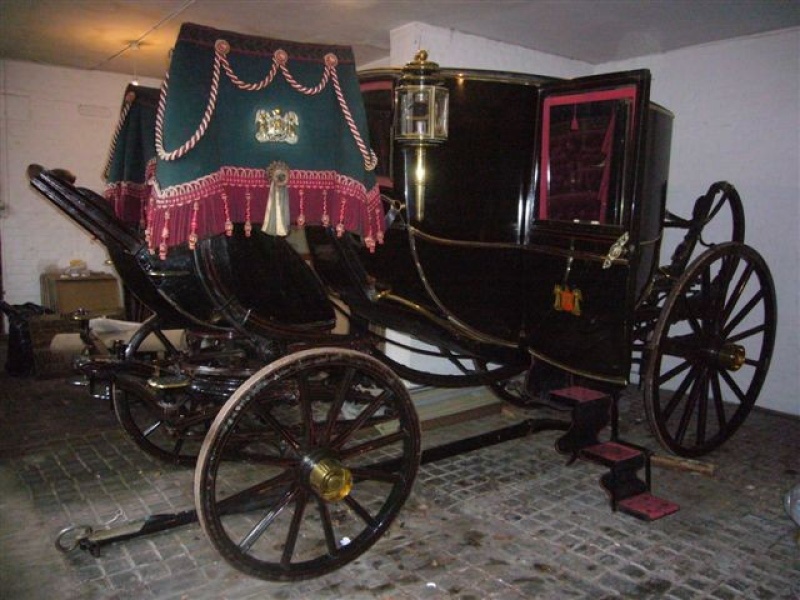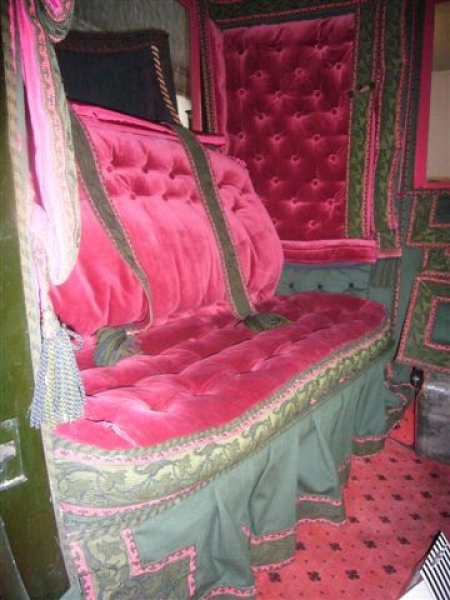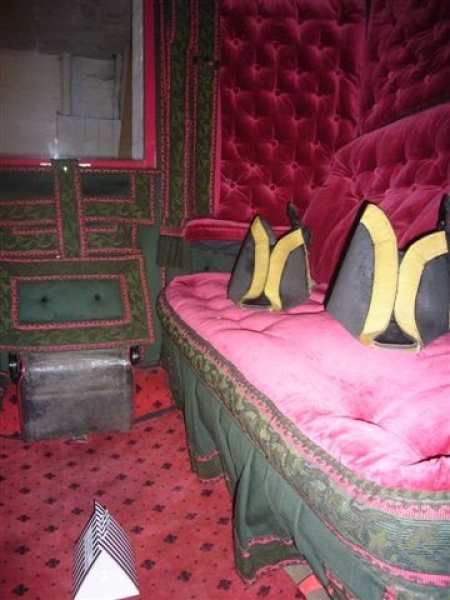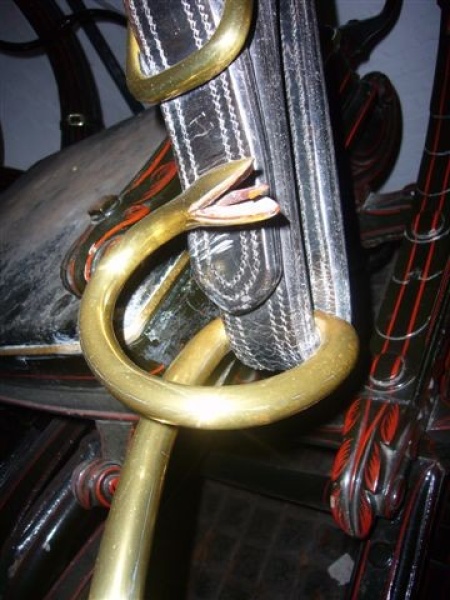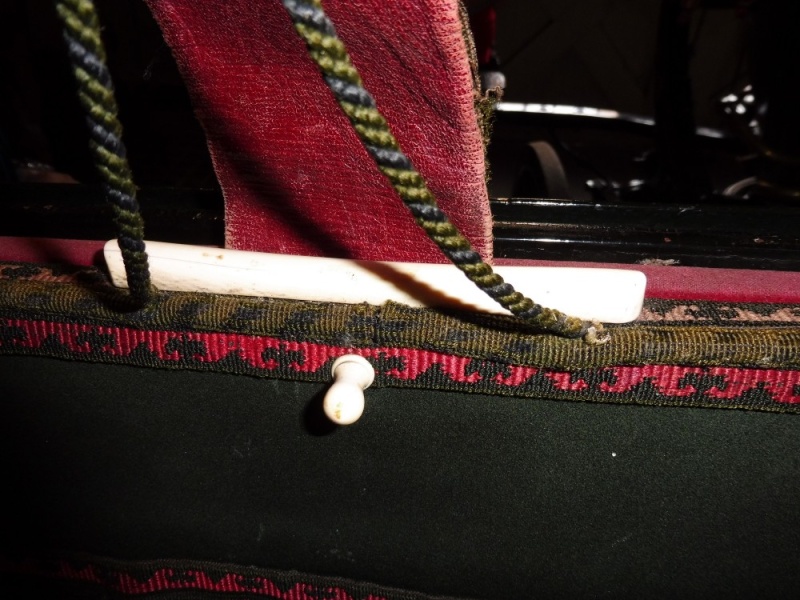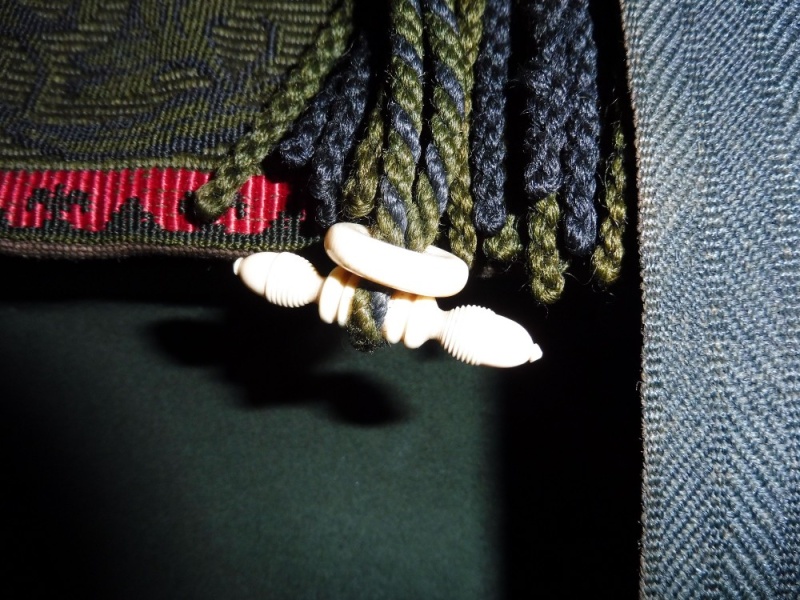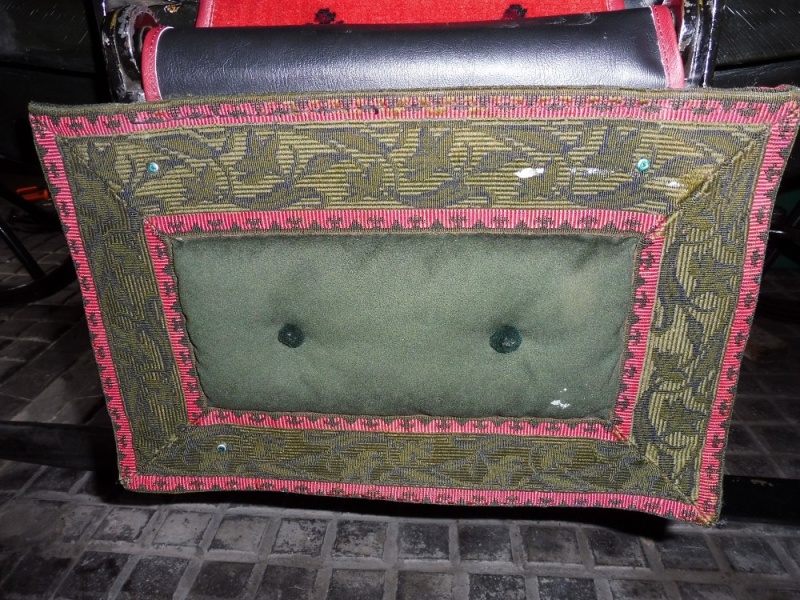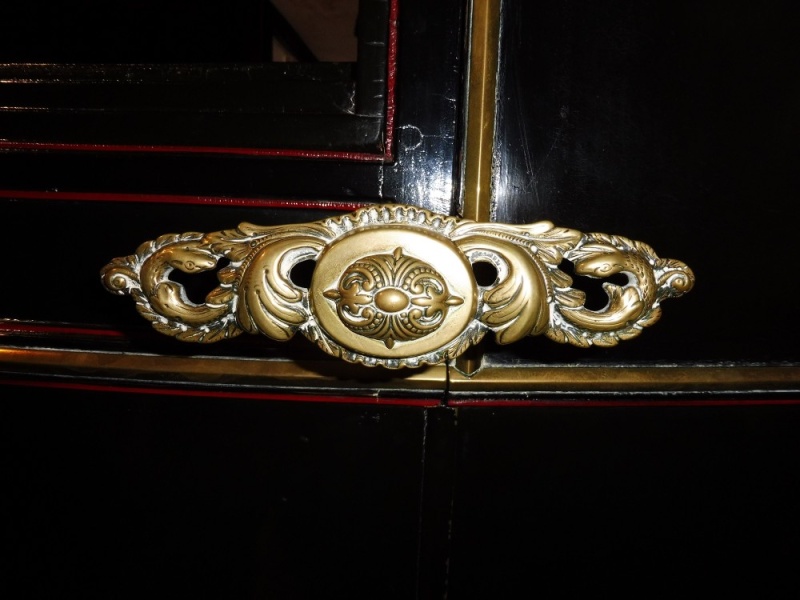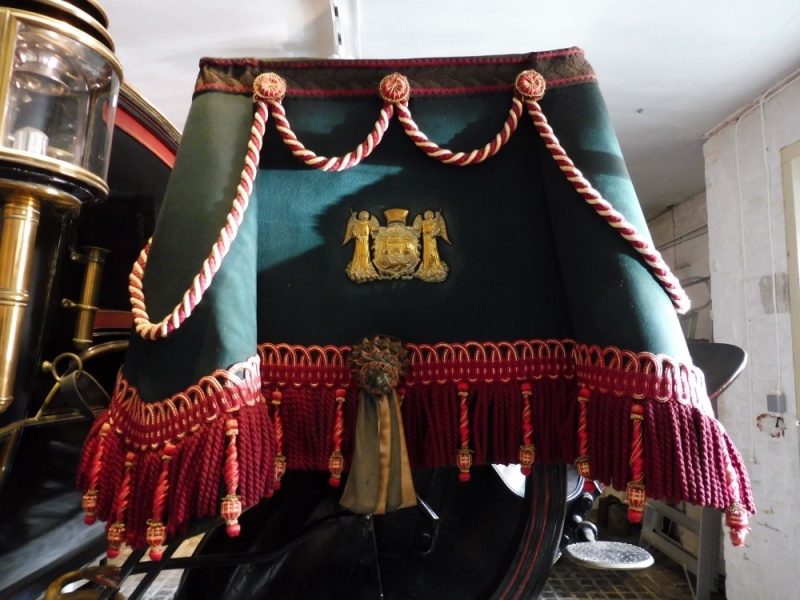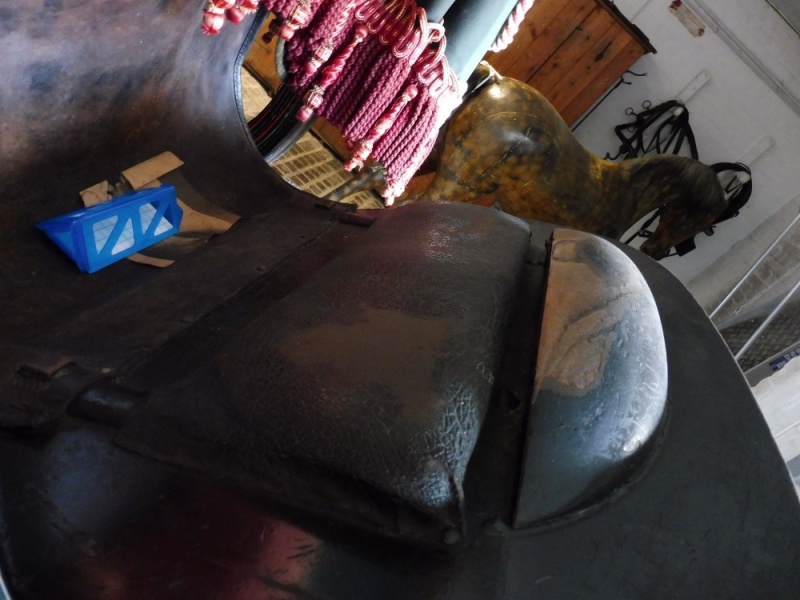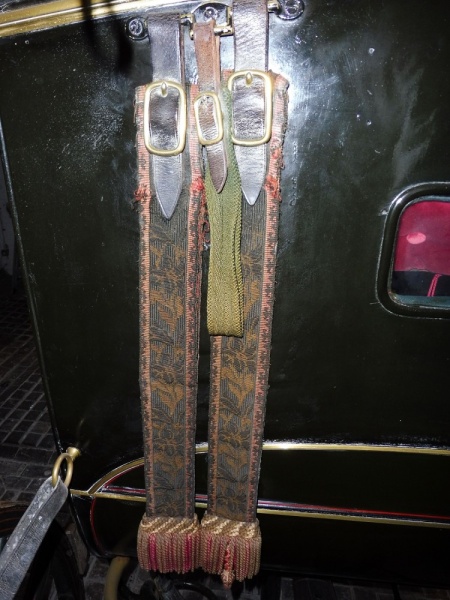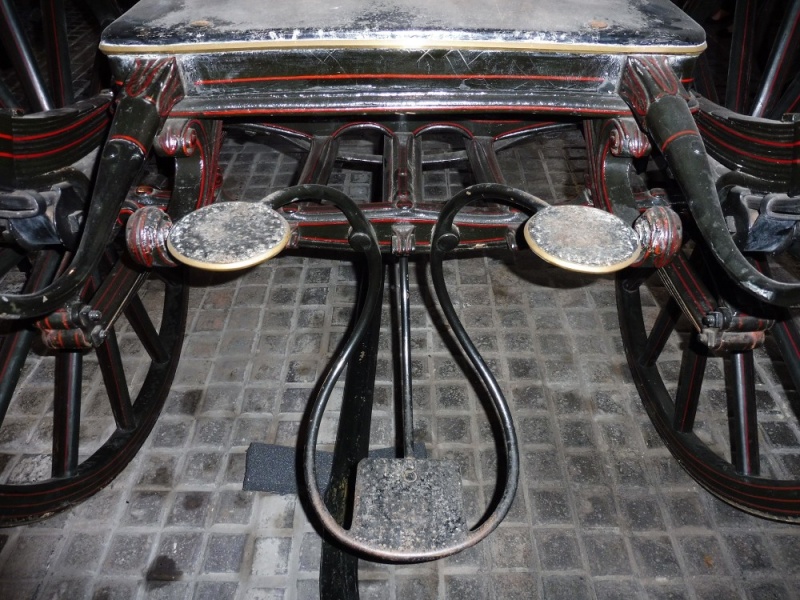Use the dots above to scroll through images.
Listed in 1 collection
Listed at 1 museum
Listed for 1 maker
Quick Details
Carriage Type
Town Coach
Date of Production
1850's
Materials used
Paint, Wood, Iron, Leather, Wool Box Cloth, Bone, Brass, SilkSummary of Town Coach
Town Coach for a pair or team of horses built by Turrill and Sons of London. A typical 19th century town coach used by the Lord Mayor of Norwich with hammer cloth, coachman’s seat and Salisbury boot, footman’s cushion and hind standards on a perch carriage.
This carriage is sprung on C springs and under springs.
This type of carriage was generally kept in the town and not at the country estate. This was because they were mostly required for events held in town and in any case would not have been suitable for the journey between town and country.
Full description
Typical coach body with a leather covered roof, a Salisbury boot (mounted on blocks that are carved with a foliate design) and brass beading around the upper half of the doors and between the upper and lower panels. The doors are mounted on concealed hinges with brass handles that have a foliate design. There are no internal handles on the doors, footmen would have opened and closed the doors for the occupants. Each door has a lowering window and a solid wooden shutter raised and lowered by broad laces. The frames of the sliding windows are covered with red wool cloth. The shutters are painted black with red lining and quite poorly painted. A small rectangular window with rounded corners is in the back panel of the body of the coach and at the front of the coach is a large rectangular window stretching the entire width of the body of the coach. The frame of this window is covered with a cerise pink wool material.
Folding steps provide access to the coach and consist of four individual steps. The steps are covered with a Holland & Holland design carpet in red on the treads and backed with black leather edged in tan leather. Some of the leather is original with some elements having been replaced at a later date. A step is attached either side of the Salisbury boot for the coachman to access the box seat. These steps consist of a cast iron bracket, the shaft of which is moulded and attached with two iron bolts. The tread is almost circular with a solid plate and a jagged surface for grip and is edged with brass beading. At the back of the coach is a very elegantly designed footman’s step consisting of a central rectangular jagged step supported and attached to the rear axle. From the front edge a curved bracket extends upwards on both sides of the central step to finish in two almost circular jagged plates edged with brass beading.
The coach has fixed cylindrical lamps with three tier chimney’s, brass furniture and black paintwork. They are the original lamps for this coach and made by Turrill and Sons. The serpent head dumb irons, fitted to the base of the body of the coach and suspended on the leather spring braces, are of brass with the tongues of the serpents being painted bright red. The door handles, beading and axle caps are all of brass and may once have been silvered, there is no trace of this now.
English pattern wheels are fairly commonplace on town coaches. The Lord Mayor's coach has wheels with 12 spokes at the front and 14 spokes at the rear on flat iron tyres with collinge patent axles. The coach is sprung on C and under springs with a fore carriage that consists of a close futchell with straight beds. There is a full wheel plate and sway bar beneath the perch and the splinter bar is compassed down beneath the futchells. The hind carriage consists of a straight hind axle bed and spring bed. The perch is bolted beneath the axle bed and mortised through the spring bed. The wood perch is compassed to match the profile of the underside of the body.
The coachman’s footboard has a toe support and a leather cushion attached (for a past coachman with short legs!) and is mounted on scroll carved blocks and edged in brass beading. A handbrake is fitted to this coach with the handle protruding through the hammer cloth.
This coach has the upper and lower panels of the body painted in very dark green (almost black) with red lining. The under carriage is of the same colour scheme and not the original paintwork . A finely painted Norwich city coat of arms is on the lower panel of each door.
The hammer cloth retains some of its original materials and is of green box cloth (replacement) with gold and red swags, fringe and silk covered wooden drops (original). A brass city arms mount is attached to each side. Four footman’s holders hang at the back of the coach and are of green, gold and red broad lace with a foliate design, leather backed with leather straps and brass buckles. They have red and gold fringing and silk covered wooden drops. Also hanging at the back are two footman’s holders of green cotton binding with leather straps and brass buckles.
Inside the coach the original broad and minor laces have survived and are in green, gold and red with a foliate design the window laces are backed with red leather. Some of the laces have been recently over stuffed and do not hang correctly. Green box cloth covers the centre of the door panels and the seat drop, this material is a later replacement of a later date but is probably a good match to the original and is edged with original broad lace. The seats and panels are upholstered in a modern red/pink velvet which is really quite horrid! The Silk blinds are modern and in a cerise pink. A red Holland and Holland style carpet covers the floor and the heaven is covered with blue box cloth.
All of the internal furniture is of bone and is beautifully carved.
Inscriptions
On the axle caps: TURRILL & SONS LONDON
Condition report
This coach appears to be in good sound condition. The wheels, under carriage and leather braces are all in good condition with all elements moving freely. The leather covered roof has signs of mould growth which ought to be treated. Inside the interior has moth. They are probably interested in the modern materials as there seems to be little damage to the original laces. The green box cloth in the interior is a good replacement for the original, but the pink velvet is pretty grim.
The hammer cloth has been fairly well restored with new box cloth and reusing the original fringing and drops. On each side a rosette has been attached, this is not the right position for these as they were bridle decorations, nice things though so ought to be removed and preserved. The concern with the hammer cloth would be damage from light. Clear plastic covers can be obtained that reduce light infiltration but allow the cloth to be viewed they also prevent dust and dirt from accumulating. Better air circulation would improve the storage conditions of this coach. There is some evidence of damp in the coach house which would explain the mould on the roof. Moving the coach around every now and then would ensure the wheels stay sound.
Access information
This coach belongs to Norwich City Council and is currently in the care of Norfolk Museum Service.
For access please contact:
Norfolk Museum Service
Shirehall
Market Avenue
Norwich
NR1 3JQ
0 1603 493625
Picture credit
Amy Bracey

 Carriage Foundation
Carriage Foundation